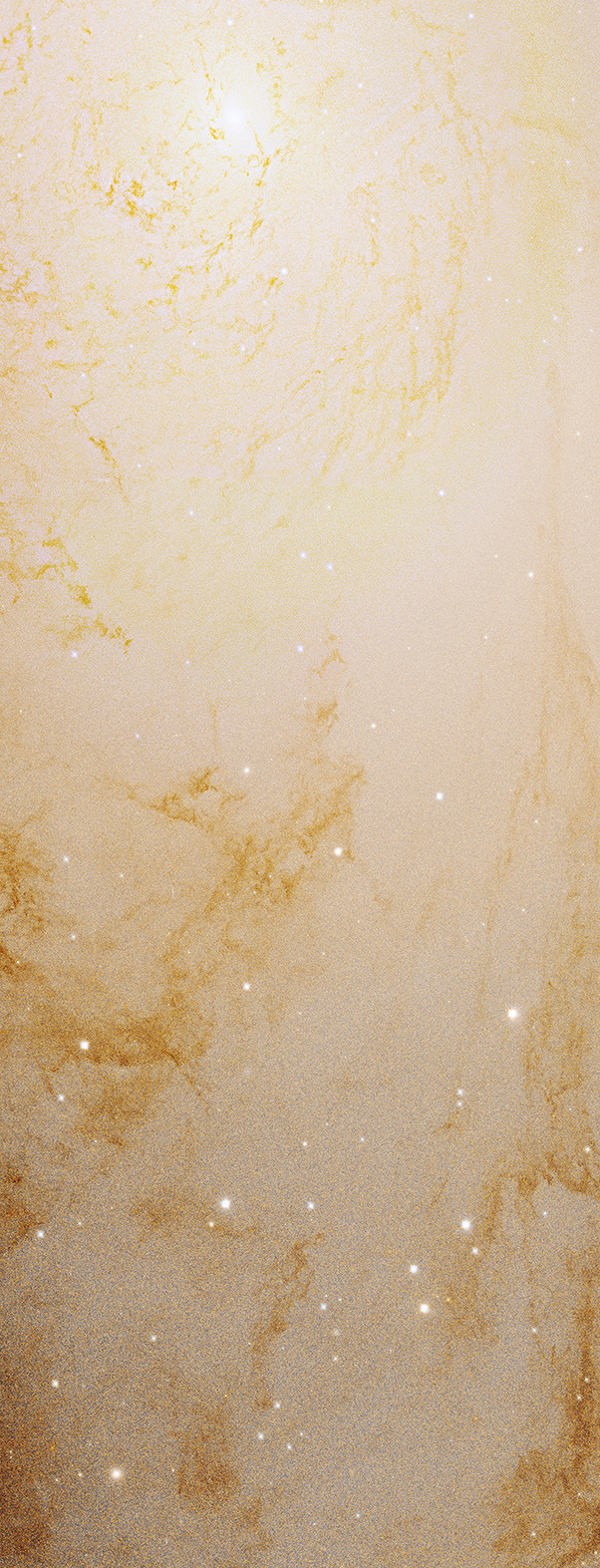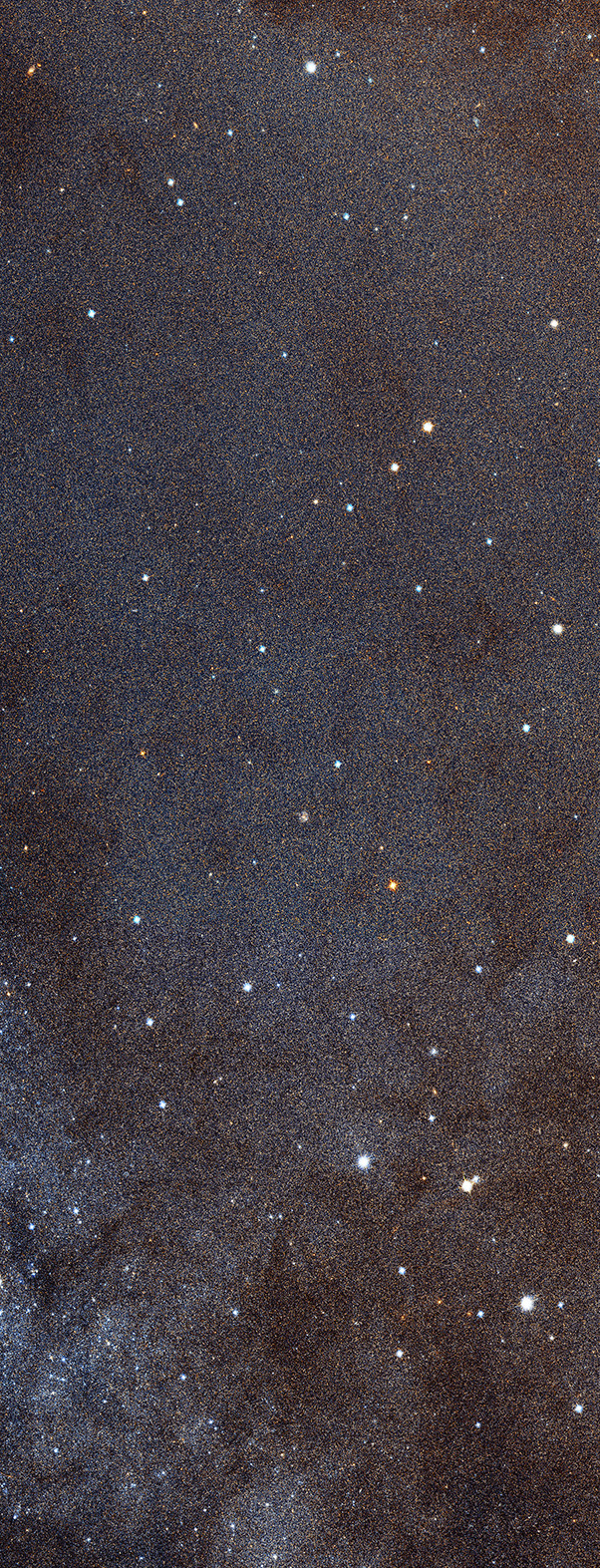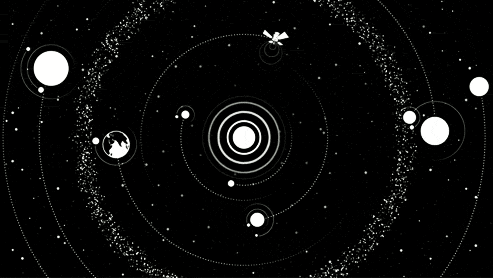Solar System: 2015 Year In Review
Solar System: 2015 Year in Review

Two mysterious worlds explored for the first time. Liquid water seen flowing on Mars. A global ocean discovered hiding inside a moon of Saturn. Even during our Era of audacious solar system exploration, 2015 stands out. Here are a few highlights:
1. New Horizons Reveals the Face of Pluto

Whether or not you call it a planet, Pluto entranced the people of Earth when it sent a love note from three billion miles away via our New Horizons spacecraft.
2. Dawn Comes to Ceres

The dwarf planet Ceres, the largest object in the main asteroid belt, teased explorers with its bizarre bright spots before finally giving up some of its secrets to the Dawn spacecraft. HERE are the latest findings.
3. Cassini Marks Discoveries and Milestones at Enceladus

When the Cassini spacecraft performs its final close flyby of Saturn’s icy moon Enceladus on Dec. 19, it will be a true milestone. Scientists using data from Cassini’s instruments have uncovered astounding secrets about this small moon, including (confirmed this year) the fact that its underground ocean of liquid water is global, and is home to hydrothermal vents.
4. We Confirmed Evidence that Liquid Water Flows on Today’s Mars

Findings from our Mars Reconnaissance Orbiter (MRO) provided the strongest evidence yet that liquid water flows intermittently — on present-day Mars.
5. Rosetta Passes Perihelion

The European Space Agency’s Rosetta mission had a remarkable year, re-establishing contact with the Philae lander and following comet 67P/Churyumov-Gerasimenko as it swung near the sun.
6. Mars Explorers Confirm Lakes Once Dotted Mars

A study from the team behind our Mars Science Laboratory/Curiosity Rover confirmed that Mars was once, billions of years ago, capable of storing water in lakes over an extended period of time.
7. MAVEN Finds a Culprit in the Loss of Mars’ Atmosphere

The Mars Atmosphere and Volatile Evolution (MAVEN) mission identified the process that appears to have played a key role in the transition of the Martian climate from an early, warm and wet environment that might have supported surface life to the cold, arid planet that Mars is today.
8. Akatsuki Gets a Second Chance at Venus

Five years after a mishap sent the spacecraft off course, the Japan Aerospace Exploration Agency (JAXA) successfully inserted the Venus Climate Orbiter “Akatsuki” into orbit around Venus. While the mission is not funded by NASA, an agency partnership with JAXA provides an opportunity for eight of our scientists to work with the Akatsuki team and study data from the spacecraft over the next year or so.
9. A Trailblazing Mission Sends Its Final Message from Mercury

After a flight of nearly 11 years, the highly successful MESSENGER mission ended when, as planned, the spacecraft slammed into the surface of Mercury.
10. Mars Reconnaissance Orbiter Completes 40,000 Orbits

Mars Reconnaissance Orbiter, at Mars since 2006, has orbited the Red Planet more than 40,000 times. The mission, which studies the whole planet from space, has shown that Mars is diverse and dynamic by way of many thousands of spectacular images and other kinds of data.
Make sure to follow us on Tumblr for your regular dose of space: http://nasa.tumblr.com
More Posts from Curiositytherover and Others




You just scrolled over a high-res segment of the Andromeda galaxy. How does NASA get its photos to look so spectacular? The same way as everyone else.

Scientists extend an atom’s lifetime with a mirror
Scientists from Chalmers University of Technology have been able to extend the lifetime of an artificial atom, allowing it to remain charged for up to ten times longer. They achieved this by placing the artificial atom in front of a short circuit, which acts as a mirror. The distance between the atom and the mirror affects how long the atom “lives,” which is the time from when an atom is charged to when it returns to its ground state.
Research team leader and Professor of Physics Per Delsing says, “We can vary the lifetime of the atom by changing the distance between the atom and the mirror. If we place the atom at a certain distance from the mirror the atom’s lifetime is extended by such a length that we are not even able to observe the atom.”
Know more at: http://futurism.com/links/scientists-extend-an-atoms-lifetime-with-a-mirror/

China and the US create a ‘space hotline’ to avoid conflicts

Scientists Discover How Loneliness Can Kill
Loneliness can increase the risk of premature death by 14 percent in older adults, according to a study published Monday that posits a physiological basis for the phenomenon. The dangers of social isolation have long been known but its effects on the body have not been well understood, the researchers said in the work published in the Proceedings of the National Academy of Sciences/PNAS. Led by University of Chicago psychologist John Cacioppo, the research team had previously identified a link between solitude and both a heightened expression of genes involved in inflammation and a diminution in the activity of other genes that play a role in the body’s antiviral responses. The result is a weakened immune systems that makes a person who lives alone more vulnerable to illness. In their latest research, the researchers looked at leukocytes, white blood cells that the immune system uses to protect against bacteria and viruses. They found the same shift in genetic expression in the white blood cells of people who lived alone and in social isolation. They also found that loneliness predicted the gene behavior a year or more in advance and conversely that gene expression predicted loneliness measured a year or more later. (Source)
You may also like:
The Science on Sleep Paralysis
Emotional Pain Counts Too
Girl With Half a Brain



Kryptos is an encrypted sculpture by the American artist, Jim Sanborn, that is located on the grounds of the Central Intelligence Agency (CIA) in Langley, Virginia. Since its dedication on November 3, 1990, there has been much speculation about the meaning of the encrypted messages it bears. Of the four messages, three have been solved, with the fourth remaining one of the most famous unsolved codes in the world. The sculpture continues to provide a diversion for cryptanalysts, both amateur and professional, who are attempting to decipher the final section. The sculptor has given clues on several occasions.
The solved messages can be read here: [x]
(Fact Source) For more facts, follow Ultrafacts

Women are better coders, research shows
Researchers from the computer science departments at California Polytechnic State University and North Carolina State University gathered data from nearly 1.4 million GitHub users, and the results are in: Women are better at writing code. The researchers also found proof of a specific bias.
Follow @the-future-now

Scientists Make New Form of Gold That’s Nearly as Light as Air
Researchers in Switzerland have been able to produce gold foam that is almost as light as air. In fact, 98% of it consists of air; the rest is made up of 20-carat gold and milk protein. According to materials scientist Raffaele Mezzenga from ETH Zurich, this gold aerogel is a thousand times lighter than any other gold alloy, is lighter than water, and is almost as light as air itself.
Read more at: http://futurism.com/links/scientists-make-new-form-of-gold-thats-nearly-as-light-as-air/

Physicists in Germany have built the most accurate timepiece on Earth, achieving unprecedented levels of accuracy with a new atomic clock that keeps time according to the movements of ytterbium ions.
Called an optical single-ion clock, the device works by measuring the vibrational frequency of ytterbium ions as they oscillate back and forth hundreds of trillions times per second between two different energy levels. These ions are trapped within an ‘optical lattice’ of laser beams that allows scientists to count the number of ytterbium 'ticks’ per second to measure time so accurately, the clock won’t lose or gain a second in several billion years.
Until very recently, our most accurate time-keepers were caesium atomic clocks - devices that contain a 'pendulum’ of atoms that are excited into resonance by microwave radiation. It’s on these clocks that the official definition of the second - the Standard International (SI) unit of time - is based.
How astronauts train underwater in NASA’s neutral buoyancy lab, which includes a full sized mock-up of the ISS.

-
 gahl-lak-tus reblogged this · 6 months ago
gahl-lak-tus reblogged this · 6 months ago -
 chiefofboatwatsonstittymug liked this · 9 months ago
chiefofboatwatsonstittymug liked this · 9 months ago -
 gahl-lak-tus reblogged this · 11 months ago
gahl-lak-tus reblogged this · 11 months ago -
 tt-squid reblogged this · 3 years ago
tt-squid reblogged this · 3 years ago -
 cognitiveballtherapy liked this · 4 years ago
cognitiveballtherapy liked this · 4 years ago -
 ohfuckoffplease liked this · 4 years ago
ohfuckoffplease liked this · 4 years ago -
 thevoiceofmadness liked this · 4 years ago
thevoiceofmadness liked this · 4 years ago -
 tishitosh reblogged this · 4 years ago
tishitosh reblogged this · 4 years ago -
 tishitosh liked this · 4 years ago
tishitosh liked this · 4 years ago -
 outerspacesworld liked this · 5 years ago
outerspacesworld liked this · 5 years ago -
 rosettaandphilae liked this · 6 years ago
rosettaandphilae liked this · 6 years ago -
 imeminemp3 reblogged this · 6 years ago
imeminemp3 reblogged this · 6 years ago -
 imeminemp3 liked this · 6 years ago
imeminemp3 liked this · 6 years ago -
 zeeseventeen reblogged this · 6 years ago
zeeseventeen reblogged this · 6 years ago -
 pavilionaguest-blog liked this · 6 years ago
pavilionaguest-blog liked this · 6 years ago -
 ytelovski liked this · 6 years ago
ytelovski liked this · 6 years ago -
 indigo-butterfly liked this · 6 years ago
indigo-butterfly liked this · 6 years ago -
 babysgotblueeyesnj liked this · 6 years ago
babysgotblueeyesnj liked this · 6 years ago -
 sharkspaceengine liked this · 6 years ago
sharkspaceengine liked this · 6 years ago -
 invinciblepatel-blog liked this · 6 years ago
invinciblepatel-blog liked this · 6 years ago -
 masterofhounds liked this · 7 years ago
masterofhounds liked this · 7 years ago -
 oetetammeurrl-blog liked this · 7 years ago
oetetammeurrl-blog liked this · 7 years ago -
 ikoooooooooooo liked this · 8 years ago
ikoooooooooooo liked this · 8 years ago -
 whimsicalentropy liked this · 8 years ago
whimsicalentropy liked this · 8 years ago -
 wordswithkittywitch reblogged this · 8 years ago
wordswithkittywitch reblogged this · 8 years ago -
 bacteriocide reblogged this · 8 years ago
bacteriocide reblogged this · 8 years ago -
 bacteriocide liked this · 8 years ago
bacteriocide liked this · 8 years ago -
 animate-mush reblogged this · 8 years ago
animate-mush reblogged this · 8 years ago -
 sezarevde liked this · 8 years ago
sezarevde liked this · 8 years ago -
 crystalklk liked this · 8 years ago
crystalklk liked this · 8 years ago -
 pursuit-of-sappiness liked this · 8 years ago
pursuit-of-sappiness liked this · 8 years ago -
 loveme-matty-blog liked this · 9 years ago
loveme-matty-blog liked this · 9 years ago -
 awlwren reblogged this · 9 years ago
awlwren reblogged this · 9 years ago -
 peasantswhy reblogged this · 9 years ago
peasantswhy reblogged this · 9 years ago -
 saunteringvaguely reblogged this · 9 years ago
saunteringvaguely reblogged this · 9 years ago -
 greenhouseghost liked this · 9 years ago
greenhouseghost liked this · 9 years ago -
 red-void liked this · 9 years ago
red-void liked this · 9 years ago -
 dumbgod reblogged this · 9 years ago
dumbgod reblogged this · 9 years ago